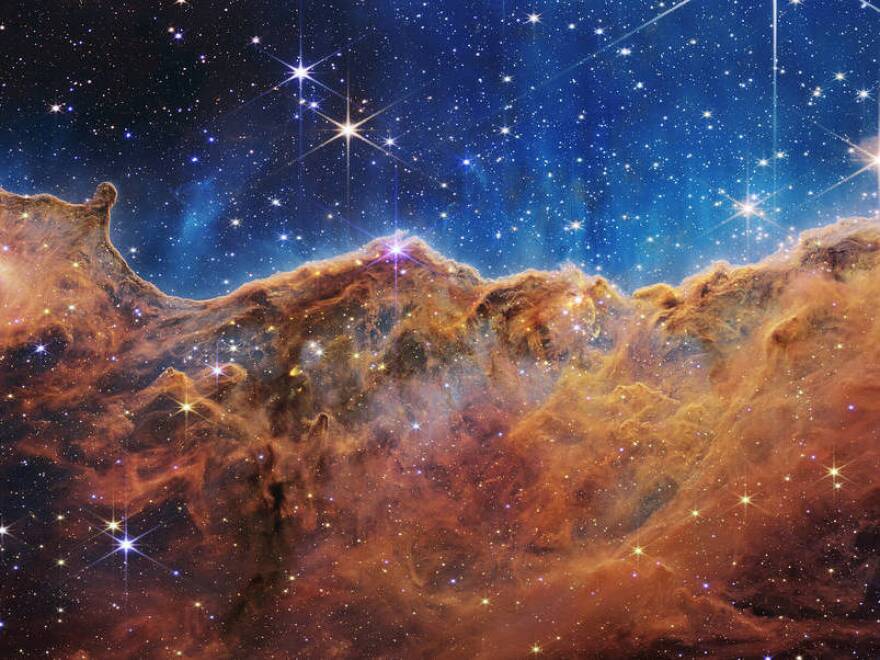NASA released a new photograph of galaxy cluster SMACS 0723 last week which depicts a cluster of galaxies in space invisible to the human eye.
The image was captured by the James Webb Space Telescope, a $10 billion satellite that took decades of research and innovation to develop.
As most of the world collectively gasped, Reddit user pizzafourlife's reaction to the images was: That's it?

"I was bummed," pizzafourlife wrote. "Without context, [it] is just a space picture."
For thousands of people on Reddit and Twitter, that context was provided by an interactive tool created by John Christensen. The web app aligns images created by the Hubble Space telescope and Webb telescope, allowing users to compare them side by side in real time.
Christensen is a software developer, but he studied physics in college and was fascinated by astronomy growing up.
"I grew up really enjoying looking at the Hubble images," Christensen told NPR over the phone. "I would watch lots of PBS space documentaries with my dad and look at a lot of astrophotography, mostly from Hubble."
When he saw the first of the Webb images released on Monday, Christensen was impressed, but like pizzafourlife, he didn't fully comprehend the improvement between Hubble and Webb without a reference point.
"What's different about it?" he asked about Webb. "Why did we spend so much human engineering effort and time and money to create this thing?"
So he coded the app to answer his questions, and he shared it on Reddit and Twitter, where it went viral.
It reached tens of thousands of people, and got thousands of responses. Christensen said many of the responses expressed the same kind of wonder he felt about the leap from Hubble to Webb.
"I think my favorite responses were people saying they showed this interactive to their kids and got their kids very excited about it," Christensen said. "That's how I ended up going into science, was kind of being inspired by Hubble images."
Even science educator and author Hank Green retweeted Christensen's app.
THIS IS SO DOPE https://t.co/RIBR0NRpV6
— Hank Green (@hankgreen) July 12, 2022
For Christensen, the comparisons between Hubble and Webb images are baffling.
"[Hubble] has always been super amazing to me," he said. "It's been this, you know, pinnacle of human potential."
"Hubble is extraordinary. And Webb far surpasses that," Christensen added.
Copyright 2022 NPR. To see more, visit https://www.npr.org.








